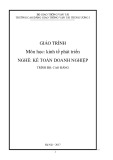CHAPTER 10 A Project is Not a Black Box
Answers to Practice Questions
1. Year 0 Years 1-10
¥15 B
10
Investment 1. Revenue 2. Variable Cost 3. Fixed Cost 4. Depreciation 5. Pre-tax Profit 6. Tax @ 50% 7. Net Operating Profit 8. Operating Cash Flow ¥44.00 B 39.60 B 2.00 B 1.50 B ¥0.90 B 0.45 B ¥0.45 B ¥1.95 B
=
t
1
= + -= NPV - ¥15B ¥3.02B (cid:229) ¥1.95B t 1.10
2. Following the calculations in Section 10.1 of the text, we find:
Market Size Market Share Unit Price Unit Variable Cost Fixed Cost Pessimistic -1.2 -10.4 -19.6 -11.9 -2.7 NPV Expected 3.4 3.4 3.4 3.4 3.4 Optimistic 8.0 17.3 11.1 11.1 9.6
The principal uncertainties appear to be market share, unit price, and unit variable cost.
3. a. Year 0 Years 1-10
¥30 B
¥37.5 B 26.0 3.0 3.0 ¥5.5
Investment 1. Revenue 2. Variable Cost 3. Fixed Cost 4. Depreciation 5. Pre-tax Profit (1-2-3-4) 6. Tax 7. Net Operating Profit (5-6) 8. Operating Cash Flow (4+7) 2.75 ¥2.75 5.75 Net cash flow - ¥30 B + ¥5.33 B
90
Inflows
Outflows
NPV
Unit Sales Revenues Investment V. Costs F. Cost Yr 1-10 Yr 1-10
Yrs 1-10 0.00 37.50 75.00
(000’s) 0 100 200
Yr 0 30.00 30.00 60.00
0.00 26.00 52.00
3.00 3.00 3.00
Taxes Yr 1-10 -3.00 2.75 7.00
PV Inflows 0.0 230.4 460.8
PV Outflows -30.0 -225.1 -441.0
-30.0 5.3 19.8
b. (See chart on next page.)
Note that the break-even point can be found algebraically as follows:
(t · Depreciation)] + NPV = -Investment + [PV · [Quantity · (Price - V.Cost) - F.Cost]· (1 - t)· (PVA10/10%)
Set NPV equal to zero and solve for Q:
10/10%
· · - I = + Q - - · - · (PV (P) t)D V) (PVA F VP (1 t)
- 30,000,000 659 3,000,000, = + - · - · ,000 (375,000 9,216,850, 260,000) 000 260,000 (0.5) 375,000 (6.144567)
,342 000 = + = = + 58,823.7 26,087.0 84,910.7 20,783,149 353,313 3,000,000, 115,000
10
Proof: 1. Revenue 2. Variable Cost 3. Fixed Cost 4. Depreciation 5. Pre-tax Profit 6. Tax 7. Net Profit 8. Operating Cash Flow ¥31.8 B 22.1 3.0 3.0 ¥3.7 B 1.85 ¥1.85 ¥4.85
t
= 1t
rounding
)
- - NPV 30 30 = (cid:229) 4.85 (1.10) = ( 829. difference -= due 0.2 to
91
Break-Even
P V
(
PV Inflows
B
PV Outflows
i l l i
Break-Even NPV = 0
•
o n s o f
Y e n )
500 450 400 350 300 250 200 150 100 50 0
0 100 200
Units (000's)
c. The break-even point is the point where the present value of the cash flows, including the opportunity cost of capital, yields a zero NPV.
d.
To find the level of costs at which the project would earn zero profit, write the equation for net profit, set net profit equal to zero, and solve for variable costs:
Net Profit = (R - VC - FC - D)· (1 - t)
0 = (37.5 - VC – 3.0 – 1.5)· (0.5)
VC = 33.0
This will yield zero profit.
Next, find the level of costs at which the project would have zero NPV. Using the data in Table 10.1, the equivalent annual cash flow yielding a zero NPV would be:
¥15 B/PVA10/10% = ¥2.4412 B
92
If we rewrite the cash flow equation and solve for the variable cost:
NCF = [(R - VC - FC - D)· (1 - t)] + D
2.4412 = [(37.5 - VC – 3.0 – 1.5)· (0.5)] + 1.5
VC = 31.12
This will yield NPV = 0, assuming the tax credits can be used elsewhere in the company.
4. If Rustic replaces now rather than in one year, several things happen:
i. ii. iii. It incurs the equivalent annual cost of the $10 million capital investment. It reduces manufacturing costs. It earns a return for 1 year on the $1 million salvage value.
For example, for the “Expected” case, analyzing “Sales” we have (all dollar figures in millions):
i. The economic life of the new machine is expected to be 10 years, so the equivalent annual cost of the new machine is:
10/5.6502 = 1.77
ii. The reduction in manufacturing costs is:
(0.5) · (4) = 2.00
iii. The return earned on the salvage value is:
(0.12) · (1) = 0.12
Thus, the equivalent annual cost savings is:
-1.77 + 2.0 + 0.12 = 0.35
Continuing the analysis for the other cases, we find:
Sales Manufacturing Cost Economic Life Equivalent Annual Cost Savings (Millions) Expected 0.35 0.35 0.35 Optimistic 1.15 0.85 0.56 Pessimistic -0.05 -0.65 -0.07
5. From the solution to Problem 4, we know that, in terms of potential negative
outcomes, manufacturing cost is the key variable. Rustic should go ahead with the study, because the cost of the study is considerably less than the possible annual loss if the pessimistic manufacturing cost estimate is realized.
93
a. 6. ‘Optimistic’ and ‘pessimistic’ rarely show the full probability distribution of outcomes.
b.
Sensitivity analysis changes variables one at a time, while in practice, all variables change, and the changes are often interrelated. Sensitivity analysis using scenarios can help in this regard.
% income = Operating leverage 7. a. change % in change operating in sales
For a 1% increase in sales, from 100,000 units to 101,000 units:
= = Operating leverage 2.50 0.075 / 0.375 3/ 37.5
+ fixed n Operating leverage += 1 b. cost operating deprecatio profit
+ (3.0 1.5) = += 1 2.5 3.0
% income = Operating leverage c. change % in change operating in sales
For a 1% increase in sales, from 200,000 units to 202,000 units:
(10.65 = Operating leverage .43 1= - (75.75 10.5)/10.5 - 75) /75
8. This is an opened-ended question, and the answer is a matter of opinion. However,
a satisfactory answer should make the following points regarding Monte Carlo simulation: a. b.
c.
d.
It is more likely to be worthwhile if a large amount of money is at stake. It will be most useful for a complex project with cash flows that depend on several interacting variables; forecasting cash flows and assessing risks is likely to be particularly difficult for such projects. It is most useful when it can be applied to a series of similar projects, so that the decision-maker can make the personal investment necessary to understand the technique and gain experience in interpreting the output. It is most likely to be useful to large companies in industries that require major investments. For example, capital intensive industries, such as oil refining, chemicals, steel, and mining, or the pharmaceutical industry, require large investments in research and development.
94
Invest in full-scale production:
NPV = -1000 + (250/0.10)
High demand (50% probability)
= +$1,500
Observe demand
Pilot production and market tests
Stop:
NPV = $0
Low demand (50% probability)
[ For full-scale production:
NPV = -1000 + (75/0.10)
= -$250 ]
9.
10.
a. b. c. d. e. Timing option Expansion option Abandonment option Production option Expansion option
11. a. The expected value of the NPV for the plant is:
(0.5 · $140 million) + (0.5 · $50 million) - $100 million = -$5 million
Since the expected NPV is negative you would not build the plant.
b. The expected NPV is now:
(0.5 · $140 million) + (0.5 · $90 million) - $100 million = +$15 million
Since the expected NPV is now positive, you would build the plant.
95
Continue production:
NPV = $140 million - $100 million
= +$40 million
Line is successful (50% probability)
Continue production:
Observe demand
NPV = $50 million – $100 million
Build auto plant (Cost = $100 million)
= - $50 million
Line is unsuccessful (50% probability)
Sell plant:
NPV = $90 million – $100 million
= - $10 million
c.
12. (See Figure 10.9, which is a revision of Figure 10.8 in the text.)
Which plane should we buy? We analyze the decision tree by working backwards. So, for example, if we purchase the piston plane and demand is high: • The NPV at t = 1 of the ‘Expanded’ branch is:
+ · · (0.8 800) .2(0 100) + = - 150 $461 1.08
• The NPV at t = 1 of the ‘Continue’ branch is:
+ · · (0.8 410) .2(0 180) = $337 1.08
Thus, if we purchase the piston plane and demand is high, we should expand further at t = 1. This branch has the highest NPV.
Similarly, if we purchase the piston plane and demand is low:
• The NPV of the ‘Continue’ branch is:
+ · · (0.4 220) .6(0 100) = $137 1.08
96
• We can now use these results to calculate the NPV of the ‘Piston’ branch at t = 0:
+ + + · · (0.6) (100 461) (0 .4) (50 137) + = - 180 $201 1.08
• Similarly for the ‘Turbo’ branch, if demand is high, the expected cash flow at t = 1 is: (0.8 · 960) + (0.2 · 220) = $812
• If demand is low, the expected cash flow is:
(0.4 · 930) + (0.6 · 140) = $456
• So, for the ‘Turbo’ branch, the combined NPV is:
+ + · · · · (0.6 150) .4(0 30) (0.6 812) 456) -= + = + NPV 350 $319 .4(0 2 (1.08) (1.08)
Therefore, the company should buy the turbo plane.
In order to determine the value of the option to expand, we first compute the NPV without the option to expand:
+ · · (0.6 100) .4(0 50) + -= + NPV 250 (1.08)
2
+ + + · · · · (0.6)[(0.8 410) .2(0 180)] (0.4)[(0.4 220) (0.6 100)] = $62.07 (1.08)
Therefore, the value of the option to expand is: $201 - $62 = $139
97
FIGURE 10.9
Hi demand (.8)
$960
Continue
Hi demand (.6)
Lo demand (.2)
$150
$220
Hi demand (.4)
$930
Continue
Lo demand (.4)
Lo demand (.6)
$30
$140
Turbo -$350
Hi demand (.8)
$800
Expand -$150
Lo demand (.2)
$100
Hi demand (.8)
Piston -$180
$410
Hi demand (.6)
Continue
$100
Lo demand (.2)
$180
Hi demand (.4)
$220
Continue
Lo demand (.4)
Lo demand (.6)
$50
$100
98
13. a.
Ms. Magna should be prepared to sell either plane at t = 1 if the present value of the expected cash flows is less than the present value of selling the plane.
b. See Figure 10.10, which is a revision of Figure 10.8 in the text.
c. We analyze the decision tree by working backwards. So, for example, if we purchase the piston plane and demand is high:
The NPV at t = 1 of the ‘Expand’ branch is:
+ · · (0.8 800) .2(0 100) + = - 150 $461 1.08
The NPV at t = 1 of the ‘Continue’ branch is:
+ · · (0.8 410) .2(0 180) = $337 1.08
The NPV at t = 1 of the ‘Quit’ branch is $150.
Thus, if we purchase the piston plane and demand is high, we should expand further at t = 1 because this branch has the highest NPV.
Similarly, if we purchase the piston plane and demand is low:
The NPV of the ‘Continue’ branch is:
+ · · (0.4 220) .6(0 100) = $137 1.08
The NPV of the ‘Quit’ branch is $150
Thus, if we purchase the piston plane and demand is low, we should sell the plane at t = 1 because this alternative has a higher NPV.
Putting these results together, we calculate the NPV of the ‘Piston’ branch at t = 0:
+ + + · · (0.6) (100 461) (0 .4) (50 150) + = - 180 $206 1.08
Similarly for the ‘Turbo’ branch, if demand is high, the NPV at t = 1 is:
+ · · (0.8 960) .2(0 220) = $752 1.08
The NPV at t = 1 of ‘Quit’ is $500.
If demand is low, the NPV at t = 1 of ‘Quit’ is $500.
99
The NPV of ‘Continue’ is:
+ · · (0.4 930) .6(0 140) = $422 1.08
In this case, ‘Quit’ is better than ‘Continue.’ Therefore, for the ‘Turbo’ branch at t = 0, the NPV is:
+ + + · · 0.6 (150 752) .40 (30 500) + = - 350 $347 1.08
With the abandonment option, the turbo has the greater NPV, $347 compared to $206 for the piston.
d. The value of the abandonment option is different for the two different
planes. For the piston plane, without the abandonment option, NPV at t = 0 is: + + + · · 0.6 (100 461) 0.4 (50 137) + = - 180 $201
1.08 Thus, for the piston plane, the abandonment option has a value of:
$206 - $201 = $5
For the turbo plane, without the abandonment option, NPV at t = 0 is:
+ + + · · 0.6 (150 752) .40 (30 422) + = - 350 $319 1.08
For the turbo plane, the abandonment option has a value of:
$347 - $319 = $28
14.
Decision trees can help the financial manager to better understand a capital investment project because they illustrate how future decisions can mitigate disasters or help to capitalize on successes. However, decision trees are not complete solutions to the valuation of real options because they cannot show all possibilities and they do not inform the manager how discount rates can change as we go through the tree.
100
FIGURE 10.10
Hi demand (.8)
$960 Continue
Hi demand (.6) Lo demand (.2)
$150 $220
Quit $500
Hi demand (.4) $930 Continue
Lo demand (.4) Lo demand (.6)
$30 $140 Turbo -$350 Quit $500 Hi demand (.8)
$800
Expand -$150 Lo demand (.2) $100 Hi demand (.8) Piston -$180
$410 Hi demand (.6) Continue
$100 Lo demand (.2)
$180 Quit $150
Hi demand (.4)
$220 Continue
Lo demand (.4) Lo demand (.6)
$100 $50
Quit $150
101
Challenge Questions
1. 1.
2
+ - · · · a. Assume we open the mine at t = 0. Taking into account the distribution of possible future prices of gold over the next 3 years, we have: [(0.5 (1,000) 450) 550) 460] .5(0 -= + NPV 100,000 1.10
3
+ + + - · · (1,000) [(0.5 ) (600 500 400) 460] + 500 2 1.10
+ + + + + + + - · · (1,000) [(0.5 ) (650 550 550 450 450 450 350) 460] + -= $526 550 3 1.10
Notice that the answer is the same if we simply assume that the price of gold remains at $500. This is because, at t = 0, the expected price for all future periods is $500.
Because this NPV is negative, we should not open the mine at t = 0. Further, we know that it does not make sense to plan to open the mine at any price less than or equal to $500 per ounce.
3
2. Assume we wait until t = 1 and then open the mine if the price is $550. At that point:
= 1t
- · (1,000) 460) -= + = NPV 100,000 $123,817 (cid:229) (550 t 1.10
Since it is equally likely that the price will rise or fall by $50 from its level at the start of the year, then, at t = 1, if the price reaches $550, the expected price for all future periods is then $550. The NPV, at t = 0, of this NPV at t = 1 is: $123,817/1.10 = $112,561
If the price rises to $550 at t = 1, we should open the mine at that time. The expected NPV of this strategy is:
(0.50 · 112,561) + (0.50 · 0) = 56,280.5
b.
1. Suppose you open at t = 0, when the price is $500. At t = 2, there is a 0.25 probability that the price will be $400. Then, since the price at t = 3 cannot rise above the extraction cost, the mine should be closed. At t = 1, there is a 0.5 probability that the price will be $450. In that case, you face the following, where each branch has a probability of 0.5:
t = 1 t = 2
(cid:222) t = 3 550 (cid:222) 500 (cid:222) 450 (cid:222) (cid:222) 400 450 Close mine
102
2
To check whether you should close the mine at t = 1, calculate the PV with the mine open:
= 1t
- · - · 1,000 460) 1,000 460) = + = · PV (0 .5) (0 .5) $7,438 (cid:229) (500 t 1.10 (400 1.10
Thus, if you open the mine when the price is $500, you should not close if the price is $450 at t = 1, but you should close if the price is $400 at t = 2. There is a 0.25 probability that the price will be $400 at t = 1, and then you will save an expected loss of $60,000 at t = 3. Thus, the value of the option to close is:
3
· 60) = · (0.25) $11,270 (1,000 1.10
2
Now calculate the PV, at t = 1, for the branch with price equal to $550:
= 0t
= PV $246,198 =(cid:229) 90,000 t 1.10
The expected PV at t = 1, with the option to close, is:
(0.5) · [7,438 + (450 – 460) · (1,000)] + (0.5 · 246,198) = $121,818
The NPV at t = 0, with the option to close, is:
NPV = 121,818/1.10 – 100,000 = $10,744
Therefore, opening the mine at t = 0 now has a positive NPV.
We can verify this result by noting that the NPV from part (a) (without the option to abandon) is -$526, and the value of the option to abandon is $11,270 so that the NPV with the option to abandon is:
NPV = -$526 + $11,270 = 10,744
2. Now assume that we wait until t = 1 and then open the mine
if the price is $550 at that time. For this strategy, the mine will be abandoned if price reaches $450 at t = 3 because the expected profit at t = 4 is: [(450 – 460) · 1,000] = -$10,000
Thus, with this strategy, the value of the option to close is:
(0.125) · (10,000/1.104) = $854
Therefore, the NPV for this strategy is: $56,280.5 [the NPV for this strategy from part (a)] plus the value of the option to close:
NPV = $56,280.5 + $854 = $57,134.5
The option to close the mine increases the net present value for each strategy, but the optimal choice remains the same; that is, strategy 2 is still the preferable alternative because its NPV ($57,134.5) is still greater than the NPV for strategy 1 ($10,744).
103
2. See Figure 10.11. The choice is between buying the computer or renting.
If we buy:
The cost is $2,000 at t = 0. If demand is high at t = 1, we will have, at that time:
($900 - $500) = $400
If demand is high at t = 1, there is an 80 percent chance that demand will continue high for the remaining time (until t = 10). The present value (at t = 1) of $400 per year for 9 years is $2,304. Because there is an 80 percent chance demand will be high for the remaining time, there is a 20 percent chance it will be low, in which case we will get ($700 - $500) = $200 per year. This has a present value of $1,152. Similar calculations are made for the case of low initial demand.
If we rent:
The cost is 40 percent of revenue per year, so if demand is high at t = 1, then we will get: [($900 - $500) – (0.4· $900)] = $40
If demand continues high, we get $40 per year for the remaining time. This has a present value of $230. If demand is low at t = 2, we will get: [($70 - $500) – (0.4· $700)] = -$80
In this case, it pays to stop renting after low demand in year 2 because we know this low demand will continue. Similar calculations are made for the case of low initial demand.
From the tree (Figure 10.11):
+ · · (0.6 400) .4(0 200) -= + 2,000 PVBuy 1.10
+ + + · · · · (0.6) [(0.8 2,304) .2(0 1,152) .4) [(0.4 2,304) .6(0 1,152)] + ] (0 1.10
PVBuy = $8.44 or $8,440
+ - · · (0.6 40) .4[0 ( 80)] = PVRent 1.10
+ + + - · · - · · (0.6) [(0.8 230) (0 .2) ( ]80) (0 .4) [(0.4 230) (0 .6) ( ]80) + 1.10
PVRent = $100.36 or $100,360
The computer should be rented, not purchased.
104
3.
In the extreme case, if future cash flows are known with certainty, options have no value because optimal choices can be determined with certainty. Therefore, the option to choose other alternative courses of action has no value to the decision-maker. On the other hand, the option to abandon a project has value if there is a chance that demand for a product will not meet expectations, so that cash flows are below expectations. Or, the option to expand a project has value if there is a chance that demand w ill exceed expectations.
105
FIGURE 10.11
Hi demand (.8)
$2304*
Hi demand (.6)
$400
Lo demand (.2) $1152*
Hi demand (.4) 2304*
Lo demand (.4)
$200
Lo demand (.6)
Buy -$2000
1152*
Rent
Hi demand (.8)
$230*
Hi demand (.6)
$40
Lo demand (.2)
$-80
Stop
Hi demand (.4)
$230*
Lo demand (.4)
-$80
Lo demand (.6)
-$80
Stop
*PV at t = 1 of cash flows from years 2-10.
106


























